Rosetta has detected the noble gases krypton and xenon while flying close to Comet 67P/Churyumov-Gerasimenko last month. The detections were made during dedicated orbits between 10 and 31 May, which took the spacecraft to within 10 km of the comet’s surface, and sometimes as close as 5 km.
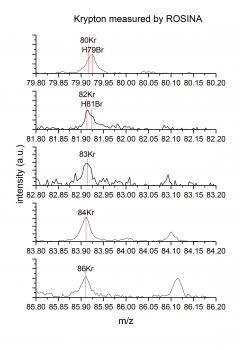
Data plot showing five isotopes of krypton measured by ROSINA-DFMS during close observations of Comet 67P-C-G in May 2016. Hydrogen bromide was also detected for the first time at the comet (m/z = mass/charge; au = arbitrary units). Credits: courtesy Kathrin Altwegg.
The discovery was highlighted today by Kathrin Altwegg, Principal Investigator of the ROSINA instrument that made the detections, during a Royal Society meeting on ‘Cometary science after Rosetta ’ in London, UK.
“We had sporadic hints of krypton while briefly flying at 12 km in early March, but the confirmation was only possible thanks to a longer period of observation during these close orbits,” she says. “Noble gases bound up inside the comet very easily escape into space through sublimation, so detecting them can be difficult – we needed to be close to get a good ‘sniff’ when the gases are first emitted from the nucleus.”
Of the naturally occurring noble gases – helium, neon, argon, krypton, xenon, and radon – Rosetta had already detected argon, during 10 km orbits of the comet in October 2014. Since then, the comet has passed through perihelion, its closest point to the Sun along its orbit and as such its most active period, forcing the spacecraft to retreat to safe distances several hundred kilometres from the nucleus for many months. But with activity much diminished, the spacecraft is now able to return to closer distances once again, providing another opportunity to search for these rare but important gases before the end of the mission.
“The isotopic signatures of these and other gases already detected at the comet act as tracers for the origin of the comet’s building blocks, for example to better understand the physical and chemical properties of the environment in which they formed,” describes Kathrin. “As such it is a key goal of the Rosetta mission to detect them.”
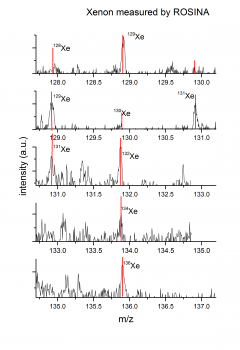
Data plot showing seven isotopes of xenon measured by ROSINA-DFMS during close observations of Comet 67P-C-G in May 2016 (m/z = mass/charge; au = arbitrary units). Credits: courtesy Kathrin Altwegg.
Noble gases rarely react chemically with other elements to form molecules, mostly remaining in a stable atomic state, and are therefore representative of the environment around a young star in which planets, comets, and asteroids are born.
Their abundance and isotopic compositions can also be compared to the values known for Earth and Mars, and for the solar wind and meteorites, for example. The relative abundance of noble gases in the atmospheres of terrestrial planets is largely controlled by early planetary evolution, including outgassing via geological processes, atmospheric loss, and/or delivery by asteroid or cometary bombardment. Thus the study of noble gases in comets can also provide information on these processes. Not only that, but it is also an important step in determining if comets of this type played any significant role in the noble gas inventory of the terrestrial planets.
Detailed analysis of the krypton and xenon detections and their implications on the origin of Comet 67P/C-G, as well as on the wider questions concerning the role of comets in Solar System evolution in general, is now underway.

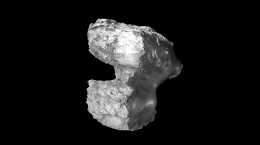
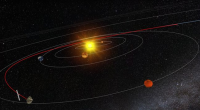
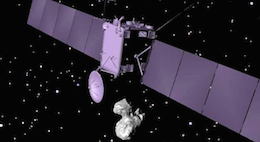


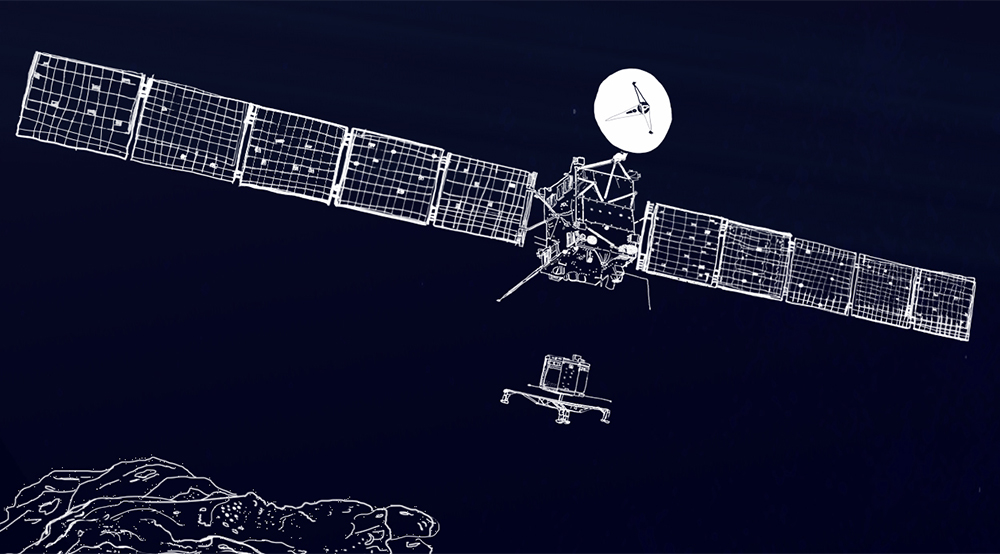
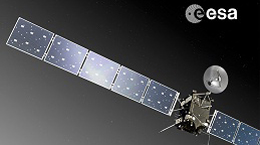
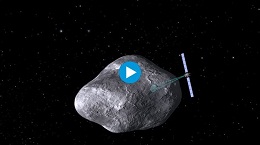
Discussion: 20 comments
Thank you for sharing. Good luck
Ok, I’m being dim.
The explanation for detecting them now is that Rosetta is close in, safely, because activity has dropped.
‘When first emitted from the nucleus’ seems sort of odd. Nothing happens to them as they diffuse out other than reducing density.
But when activity was high, out gassing was high, and the partial pressure of the noble gases would presumably also have been much higher, and one might have thought detectable at the bigger stand off distances. Whether you can detect them or not depends on their local density, which at a given distance depends on the source term.
It sort of implies that dust, the thing most dangerous to Rosetta, and noble gas out gassing, do not correlate in a simple way. High dust levels, forcing Rosetta out, don’t seem to imply high noble gas out gassing rates.
Anyone got an explanation?
Perhaps, as I said, I’m just dim this evening!
Maybe Planetology a little more complex than Cosmology [joke] 😉
the local densities around perihelion at 200-400 km distance were far lower than local densities at 7-10 km at 3 astronomical units as gas density goes with 1/r^2, r being the distance to the nucleus. Although outgassing was much higher at perihelion, this did by far not compensate for the large distances. So Signal to noise for noble gases was not high enough to detect them at perihelion. Dust does not follow a 1/r^2, but a more complicated formula. You first need enough gas to lift the dust from the comet. The largest dust grains lifted are determined by the outgassing rate. During perihelion you can lift therefore larger dust grains than at 3 AU. That means at 3 AU not only is there less dust, but there are also less big dust grains allowing to go close to the comet. That’s why Kr and Xe were only detected now.
Thanks Kathrin, that makes sense having thought about it. So, basically, the difference between a 10 km orbit and a 300 km orbit will be ~ 900 x ((300/10)^2) more gas molecules, assuming similar outgassing rates.. Even with a production rate at perihelion being perhaps 50 x higher than at 3 AU, it still means it would be easier to detect at 10 km at 3 AU.
Kathrin – many thanks.
Thanks a lot for prompt notification, and for disambiguation with HBr.
Stratification through quasi-infinite sublimation|deposition cicles? [After perihelion surface quickly cooling but internal thermal inertia stills commands]..
And this is a Harvey idea: Once ‘airbone’ gases pretty much free path. Particles get to keep ‘pushed’ for a longer path. Not to forget that one able of them able to transport ‘charge’.
Please help with more speculations.
@Harvey,
I don’t have an explanation, as such, but it seems that not all outgassing is equal when it comes to producing dust. There is a paper that you may find interesting regarding ALICE observations of outbursts:
“The Nature and frequency of the gas outbursts in comet 67P/C-G observed by the ALICE far UV spectrograph on Rosetta.” Feldman, et al. A catchy title, I think you’ll agree. Freely available from Arxiv, here: https://arxiv.org/abs/1606.05249 (17/06/16)
These outbursts are not the spectacular collimated jets we saw around perihelion (due to the sunlight reflecting off dust, as I seem to recall 🙂 ), but were essentially unseen by OSIRIS and NAVCAM., due to the lack of dust.
The most interesting finding, however, seems to be that these outbursts were driven by O2. Using the data, they find that the O2:H2O ratio was around 0.5, which is considerably higher than the ratio determined when O2 was first detected, which was around 0.04. There is no evidence that other supervolatiles, such as CO, were responsible. O2 has a similar sublimation temperature to CO apparently, which is around 30K., from memory.
They reference a presentation by Skorov ,Y.V. from the 47th Lunar & Planetary Science Meeting regarding the possible mechanism for these outbursts; that paper is a bit tricky to find, so here is a link:
“A model of short-lived outburst (sic) in the Anuket region of Comet 67P/C-G.” Skorov, Yu. V., et al.
https://www.hou.usra.edu/meetings/lpsc2016/pdf/1901.pdf
Ianw16 thanks.
One has to be careful about looking up vapour pressures for dilute species.
The VP curve only applies to the bulk material.
It’s likely that Kr and Xe atoms are isolated in a matrix or the other bulk constituents. So their release will be determined by the evaporation of the matrix and its VP curve, not the rare gas VP curve.
It’s not clear that even for say CO use of the bulk curve is justified – even the O2 at the 4% level.
It certainly does appear, as in your first para, and now from this Kr/Xe evidence, that dust production and gas production are not correlated in any simple way. I guess, with the usual benefit of 20:20 hindsight, that’s not really surprising..
I need to plug numbers into:
“The existing vapor pressure measurements available in the literature for the liquid oxygen between the triple and critical points have been utilized to establish the constants and exponent of the modified Frost-Kalkwarf vapor pressure equation in the reduced form as follows:
lnPr=6.372408−6.637925Tr−1.975760lnTr+0.265517T5r”
Yes,mother last term is in Tr^5 it seems; I’ve never come across the Frost Kallwarf equation before, a little research is needed, strange form at first sight.
https://link.springer.com/article/10.1007/BF02706097
Too much time ago to remember who started the chat about electrostatic dust transport… Some experimentation was due::
“A NASA-funded research team, led by Mihaly Horanyi at the University of Colorado-Boulder (CU-Bolder), has conducted laboratory experiments to bring closure to a long-standing issue of electrostatic dust transport, explaining a variety of unusual phenomena on the surfaces of airless planetary bodies…”
…..
“…These laboratory observations reveal that dusty surfaces can become smooth due to dust mobilization and could help explain the formation of the “dust ponds” like those seen on asteroid Eros and comet 67P, and the unexpectedly smooth surface on Saturn’s icy satellite Atlas.”
That brings scientific discipline to the leveling of low land “ponds” conundrum. Like it a lot.
via https://phys.org/news/2016-07-static-electricity-airless-planetary-bodies.html
Just signaling to the CU-Boulder Team that leveling is Low Land phenomena at 67P. Doesn’t happens at dry High Lands..
So, more related to the near horizon glow than to the leveling. The smoothness more related to coma return.
Not forgetting that some horizon glow and smoothing also due to Harvey’s sublimative ‘percolating’.
Ponds are also heavily related to low gravitational slope. If remembering well that chat: electrostatic dust ‘deposition’ is function of electric fields geometry..
@Logan,
You may find this interesting, if you haven’t already seen it:
“Surface charging and electrostatic dust acceleration at the nucleus of comet 67P during periods of low activity.”
Nordheim, T.A., et al.
https://www.sciencedirect.com/science/article/pii/S003206331500238X
Thanks Ianw16. In order to keep with this idea [‘meteorologic’ origin], ponds would have to be very, very slow phenomena.
After banding through whatever I could grab from this Great paper by T.A. Nordheim, G.H. Jones, J.S. Halekas, E. Roussos, A.J. Coates.
The paper doesn’t model for interaction of dust with ultra-cooled [all gas initially high energy when sublimating, but a little portion ultra-cooled in her way out of the core].
‘Leaking’ could then be expressed that way, as the C02 of old disco parties.
If micro dust positive and neighbors becoming positive also, levitation start [maybe helped by sublimation]. If low land ponds more salt enriched then more grounded, behaving like electrostatic sinks..
This model would require Low Lands to be less sublimating than its surroundings.
Still, why the low gravitational slope on the ponds?
“Still, why the low gravitational slope on the ponds?”
Some gas emissions are actually surface flowing…. Remembering those ‘stream terraces’ near to big shadowed walls, and ‘Robin’ hazes’. Some gas hyper-cool. Probably repting down to the lowest lands. There caching micro-dust and using it as ‘seed’ for condensation|precipitation. Dust charge useful to this ‘seeding’ also.
Even small ‘ponds’ so lacking in clues about the obvious subjacent structures, that strongly preferring now this ‘meteorologic’ explanation for them.
Also for ‘stream terraces’ next to walls. Was at stream terraces that found first low gravitational slope pattern, at 67P.
Now I going to keep insisting on this very, very slow ‘cooking’ of 67P. And doing that going back to that shocked bow.
Not seeing it anymore as an smooth flow. If the bow having an associated field. The field neither smooth.
Add to this recipe the extremely low thermal conductivity of the core.
This non-smooth shock-bow-associated field is generating a small amount of work INSIDE that ‘Dewar’ 67P flask.